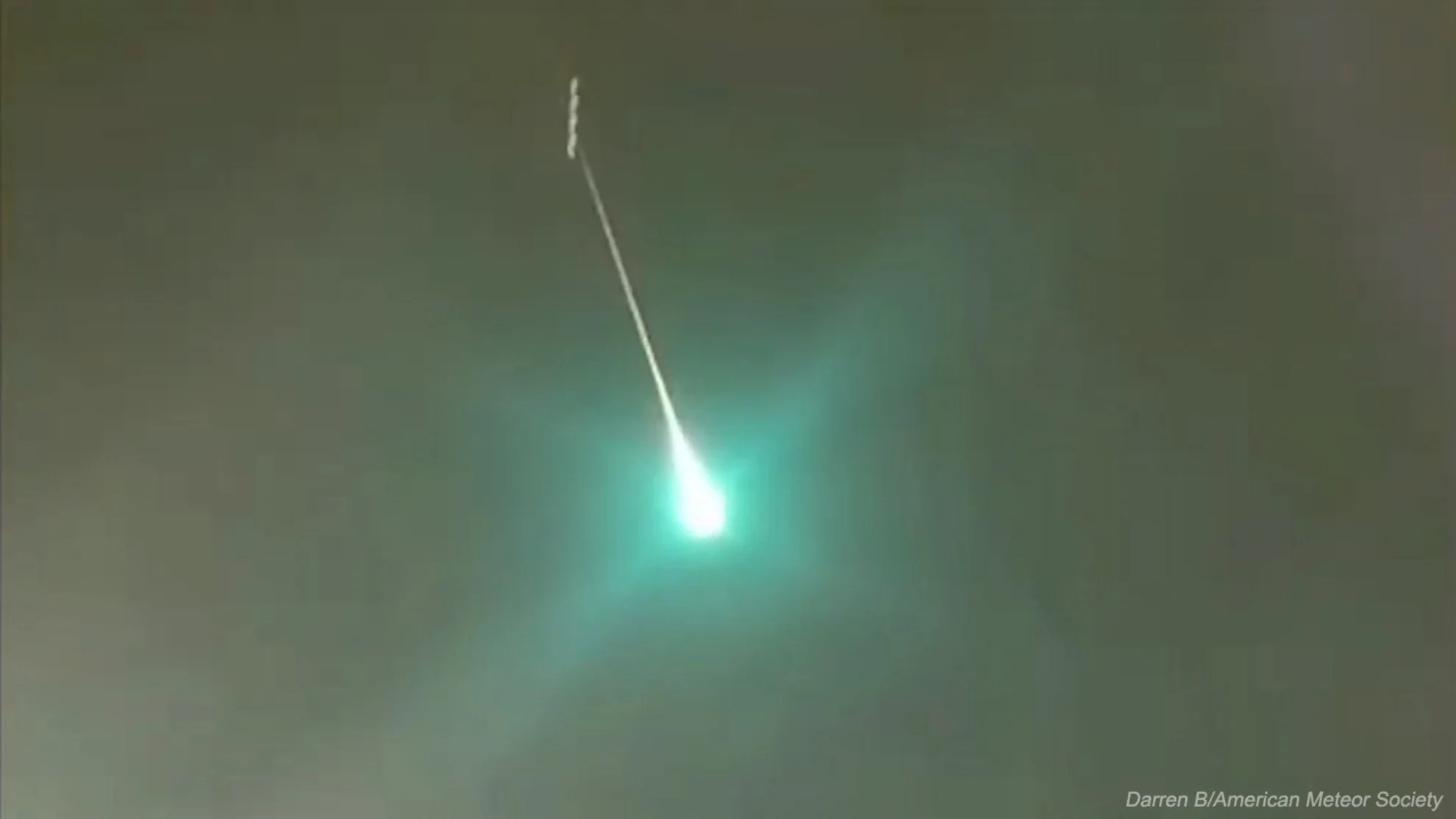
Bright green fireball flashed over NW Australia Sunday night
This remarkably persistent meteor may have been a rare specimen
Residents of Western Australia looked up to see a shocking sight early Monday morning, as a bright green fireball streaked across the sky overhead.
It was just before 1 a.m. local time, in the Pilbara region of Western Australia when witnesses in the sparsely populated area spotted this intense meteor. The American Meteor Society website, which tracks fireball sightings around the world, has only three reports of the event. Still, video footage of the event documented the spectacular nature of this fireball.
Watch below: Local resident Darren B. captured this view, which he submitted to the AMS.
Four aspects of this sighting are remarkable. First, the size and brightness indicate that this was a significant object. Second was the intense green colour, which gives us clues about the meteoroid's composition. Third, how long it was visible in the sky provides us with an idea of how durable the object was. Fourth, its path across the sky may possibly reveal what happened to it once it winked out.
Figuring out the size and mass of a meteoroid, by merely looking at the fireball meteor it causes as it passes through the atmosphere, is not an easy task. The meteoroid's speed through the air affects its brightness as well. This could have been something as small as a pebble, travelling very fast, or it could have been something larger, even as big as a beach ball, travelling slower. One thing for sure, it was much more substantial than the grains of coarse sand that typically cause these flashes of light.

This screenshot from Darren B.'s video gives a clear look at the fireball, almost directly overhead. Credit: Darren B./AMS
When a meteoroid slams into Earth's atmosphere, the air in its path becomes compressed to the point where it becomes superheated and glows. This is the source of the meteor flash we see. Often, the meteor flash is just white. The superheated air can vapourize parts of the meteoroid's surface, though, and vaporized metals and minerals cause the flash to take on different colours. Seeing green in a meteor can indicate the presence of magnesium or maybe even iron in the meteoroid. Iron meteoroids are some of the rarest specimens. These are pieces of the core of some destroyed protoplanet or giant asteroid, which have been floating around space for millions to billions of years. (Note: the air the meteoroid passes through can influence the colour of the meteor as well. So, this isn't something we can truly know, for sure.)
Now, a fireball only remains a fireball for as long as it can keep compressing the air molecules in its path hard enough to keep them superheated. For its entire trip through the atmosphere, though, the air molecules are robbing the meteoroid of its momentum and speed, and eventually, the air wins. The meteoroid will slow to the point where it 'goes dark'. How long it takes to do this will depend on the specific combination of how large, how fast and how 'strong' the object is.
Based on the videos of this fireball, it appears as though the meteoroid was not travelling very fast. It still crossed hundreds of kilometres of the sky during its 20-second flight. Even so, it did so at almost a lazy pace compared to other fireballs witnessed over the years. So, if the meteoroid eventually slowed down and fell to Earth, there's a good chance it was made of something very dense. This supports the idea that it was a hunk of iron and nickel.
It is also possible that, even as this fireball blazed through the atmosphere, it did not encounter enough air molecules in its path to slow it down significantly. That leads to the last point.
Talking to ABC Pilbara, Renae Sayers, a Research Ambassador in the Space, Science and Technology Centre, at Curtin University in Perth, Australia, said that this might have been a 'grazing fireball'.
"The reason why this is really interesting and the jury is out with our scientists," Sayers told ABC News, "is that earlier this year we shared a paper of a grazing fireball that actually entered our atmosphere, burned 1,300 km across the Australian sky and kicked back out into interstellar space, and that's what this looked like as well."
With so few reported sightings on the American Meteor Society page, and with some of those reports conflicting with others, they have been unable to plot an estimated trajectory for this fireball. So, there's no telling where this object ultimately ended up. If it fell to Earth, it is likely on the bottom of the ocean off the northwest coast of Australia. If it was only a grazing fireball, though, it is now flying around space again, after being ejected out of the planet's atmosphere.
Sources: American Meteor Society | ABC News | Perth Now
